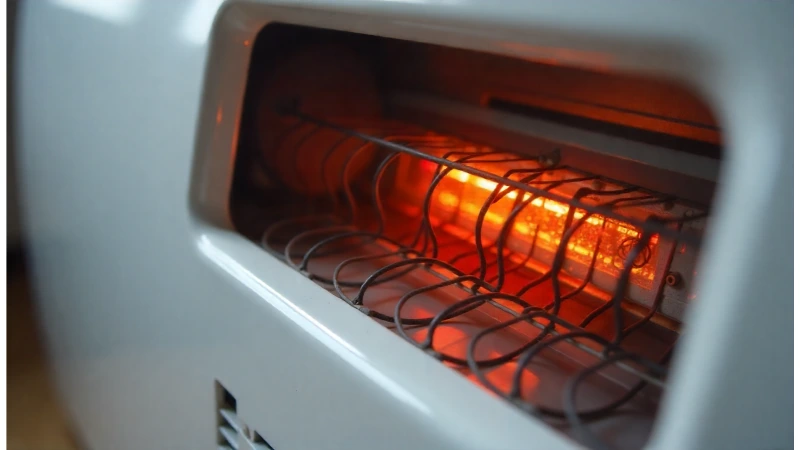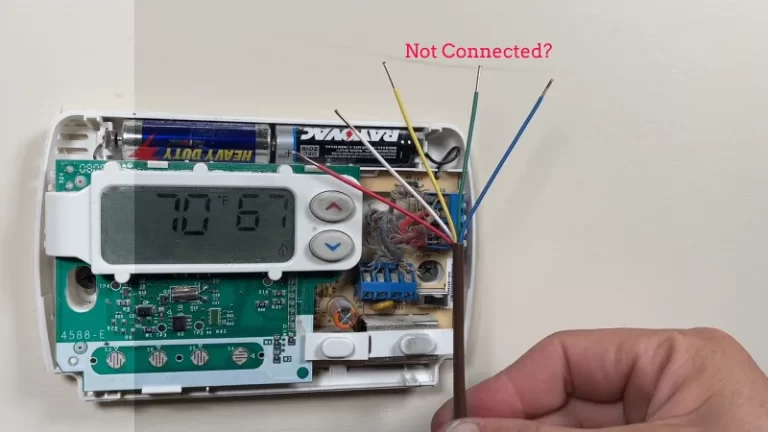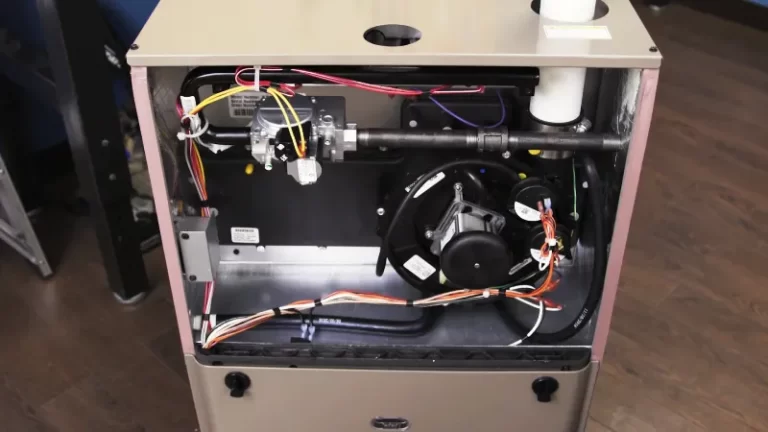Why Is My Electric Heater Making Buzzing Noise? (And How to Fix It)
An electric heater should be a source of quiet, consistent warmth, not a cause for concern. When it starts making a persistent buzzing noise, it’s natural to feel uneasy. Is it dangerous? Is it about to break? That unsettling sound is your heater’s way of telling you something needs attention.
Ignoring a buzzing electric heater is a risk you shouldn’t take. While some causes are minor, others can point to serious electrical issues that pose a fire hazard. This guide will help you diagnose the source of the buzz, understand the potential dangers, and provide clear, actionable steps to safely silence the noise and restore peace to your home.
You'll Learn About
Deconstructing the Buzz: Common Causes of a Noisy Electric Heater
A buzzing sound in your electric heater is almost always caused by a vibration. The key is to identify what’s vibrating and why. The culprits typically fall into a few main categories, from simple annoyances to critical electrical faults.
Understanding these potential sources is the first step toward a safe and quiet solution. Let’s explore the most common reasons your heater might be buzzing.
Vibrations from Loose Components or Casing
Over time, the normal operation of an electric heater can cause screws and other components to loosen. This is especially common in heaters with fans, as the motor’s vibration can be transferred to the heater’s frame.
When parts of the casing, internal mounts, or even the heating element itself are not securely fastened, they can vibrate against each other, creating a distinct buzzing sound. This is often more noticeable when the heater first kicks on or shuts off.
The Hum of Electrical Current
The very nature of alternating current (AC) electricity flowing through components can create a “mains hum.” This is a low-frequency buzz caused by the electromagnetic field making metal parts vibrate slightly. While a very faint hum can be normal, a loud or sudden buzzing points to a problem.
This could be due to an issue with an internal transformer, a failing capacitor, or a relay struggling to function. These components manage the flow of electricity, and when they malfunction, the buzzing can become much more pronounced and concerning.
Fan and Motor-Related Noises
If your electric heater has a fan to circulate warm air, the fan assembly is a primary suspect for buzzing noises. Dust and debris can accumulate on the fan blades, causing them to become unbalanced and vibrate as they spin.
Additionally, the bearings in the fan motor can wear out over time. When they lose lubrication or become damaged, they can produce a grinding or buzzing sound. This noise will typically start or stop in sync with the fan’s operation.

Is a Buzzing Electric Heater Dangerous?
A buzzing noise from an electric heater should never be ignored, as it can indicate serious electrical hazards. A buzz might be a sign of a faulty electrical connection or a failing component, which can lead to overheating and pose a significant fire risk.
Electrical issues like frayed wiring or a malfunctioning capacitor are potential dangers that require immediate attention. It’s crucial to address the source of the buzz promptly to ensure the safety of your home.
When the Buzz Signals a Fire Hazard
A loud, persistent buzzing, especially if accompanied by a burning smell or smoke, is a critical warning sign. This could indicate arcing, which is electricity jumping between loose connections. Arcing creates intense heat and is a major cause of electrical fires.
If you notice these signs, immediately unplug the heater and do not use it again until it has been inspected by a professional. The risk of a fire is too great to ignore. While you assess the situation, you might also consider common issues in other household appliances, such as garage refrigerator problems, which can also stem from electrical faults.
Assessing the Risk Level
The type of buzz can help determine the level of immediate danger. A soft, consistent hum that has always been present might just be the normal operating sound of the device’s transformer. However, a new, loud, or intermittent buzzing sound suggests a developing problem.
Pay attention to when the buzzing occurs. If it happens only when the fan is running, the issue is likely mechanical. If it buzzes as soon as it’s plugged in, even before the heat is on, the problem is more likely within the core electrical system, which carries a higher risk.
Step-by-Step Guide to Silencing a Buzzing Heater
Once you’ve determined the buzzing needs to be addressed, you can follow a systematic approach to find and fix the problem. Always unplug the electric heater from the wall outlet and allow it to cool completely before performing any inspection or maintenance. Safety is the top priority.
These steps will guide you from simple, external checks to more involved internal inspections. If at any point you feel uncomfortable or unsure, stop and call a qualified technician.
Step 1: The Safety-First Inspection
Start with a visual inspection of the heater’s exterior. Check the power cord and plug for any signs of damage, such as fraying, melting, or discoloration. A damaged cord is a serious fire hazard and means the heater should not be used.
Ensure the heater is on a stable, level surface. An uneven floor can cause vibrations that lead to buzzing. Gently rocking the heater can sometimes reveal if the noise is simply due to instability.
Step 2: Cleaning and Debris Removal
Dust is a common enemy of electric heaters. A significant buildup can obstruct the fan or coat the heating elements, leading to operational issues and noise. Use a vacuum cleaner with a brush attachment to thoroughly clean all vents and grilles.
If possible, and if the manufacturer’s instructions allow, open the heater’s casing to access the interior. Carefully clean the fan blades and the area around the motor. Removing this buildup can often resolve buzzing caused by an unbalanced fan.
Step 3: Tightening Loose Components
While the heater’s casing is open, visually inspect for any loose screws or fasteners. Gently check the mounts holding the fan, motor, and heating element to the frame. Use a screwdriver to tighten anything that has become loose.
Pay close attention to the screws securing the outer casing. A loose panel is a very common source of vibrational noise. Securing these components can provide a simple, effective fix. Similarly, loose components are a frequent issue in other systems, like knowing what causes creosote to build up in chimney systems, where loose flue liners can be a problem.
Troubleshooting Deeper Electrical Issues
If cleaning and tightening components don’t solve the problem, the buzzing is likely stemming from an electrical component. This is where troubleshooting becomes more complex and potentially hazardous. Issues with capacitors, transformers, or internal wiring often require professional expertise.
A buzzing noise can be a symptom of a failing part that is struggling to manage the electrical load. Addressing these issues is not just about stopping the noise; it’s about preventing a complete failure of the heater or a dangerous electrical event.
Identifying a Failing Component
A failing capacitor or transformer can produce a distinct electrical buzz. These components are typically small, box-like or cylindrical parts on the internal circuit board. Visually inspect them for signs of damage, such as bulging, leaking fluid, or burn marks.
If you suspect a specific component is the source of the noise, do not attempt to touch or remove it yourself. Capacitors can store a dangerous electrical charge even when the unit is unplugged. This type of repair is best left to a professional.
| Sound Type | Potential Cause | Recommended Action |
|---|---|---|
| Soft, constant hum | Normal transformer operation | Monitor for any changes in sound |
| Loud, vibrational buzzing | Loose casing, fan, or internal components | Unplug, cool, and tighten all screws |
| Buzzing/Rattling when fan is on | Debris in fan or unbalanced blades | Unplug, cool, and clean the fan assembly |
| Sharp, electrical buzz | Failing capacitor, relay, or loose wiring | Unplug immediately and call a professional |
| Buzzing with a burning smell | Electrical short or arcing | Unplug immediately and do not use; professional repair required |
When to Call a Professional Electrician
It’s important to recognize the limits of DIY repair. While cleaning and tightening screws are safe for most homeowners, electrical repairs are not. If the buzzing persists after basic troubleshooting or if you suspect an electrical fault, it’s time to call for help.
A qualified technician has the tools and knowledge to safely diagnose and repair electrical problems. The cost of a professional repair is a small price to pay for the safety and peace of mind of your household. Understanding repair costs is important, which is why looking into resources like how much does it cost to fix a fuse in the home can provide valuable context for electrical work.
Making the Right Call for Your Safety
If you notice any of the following, do not hesitate to contact a professional: the buzzing is loud and sounds distinctly electrical, you smell burning plastic or ozone, the heater trips the circuit breaker, or you see sparks or smoke. These are all signs of a serious issue that requires expert attention.
Attempting to fix complex electrical problems without proper training can lead to electric shock or cause further damage to the appliance, potentially creating an even greater fire hazard. Your safety is paramount, so when in doubt, make the safe call.


